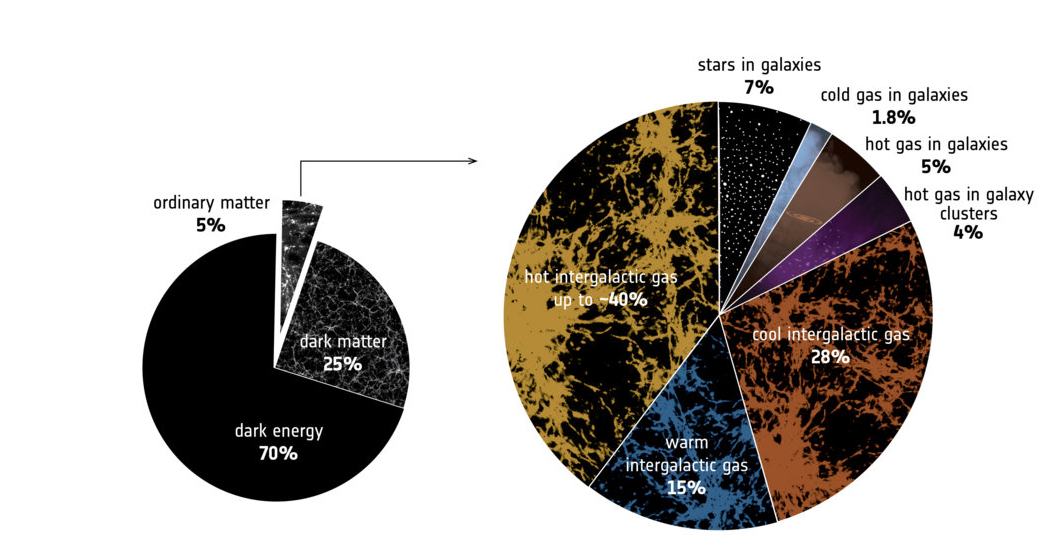
The cosmic budget of ‘ordinary’ matter
Credit: ESA
The total amount of ordinary matter, called baryonic matter, makes up for about 5% of the total matter of our Universe. The other 95% consists of the exotic dark matter and dark energy. However, even this 5% of baryonic matter is hard to detect.
Stars, the interstellar gas plus the diffuse gas in the haloes that surround galaxies make up to less than 20% of the baryonic matter. The rest is believed to be in less dense regions that is challenging to observe, like in the filaments of the cosmic web. Astronomers, using various techniques have managed to observe some of this intergalactic material, which raises the total budget of the detected baryonic matter to about 60%.
Now scientists, used ESA’s XMM-Newton X-ray space observatory to detect the missing baryons. Specifically, they studied a quasar that lies 4 billion light years from us, for a total of 18 days, between 2015 and 2017, the longest X-ray observation ever performed of such a source!! Their analysis showed indications of huge reservoirs of material, that could close the gap in the baryon budget of the Universe.
Astronomers are planning to extend their study to more quasars using the XMM-Newton as well as NASA’s Chandra X-ray telescope. In the next decade, Athena, an X-ray satellite planned to launch in 2028, will offer much higher sensitivity and will allow scientists to explore in much greater detail, the intergalactic medium looking for the missing baryons!!
Publication: Nicastro et al. 2018
Source: ESA
